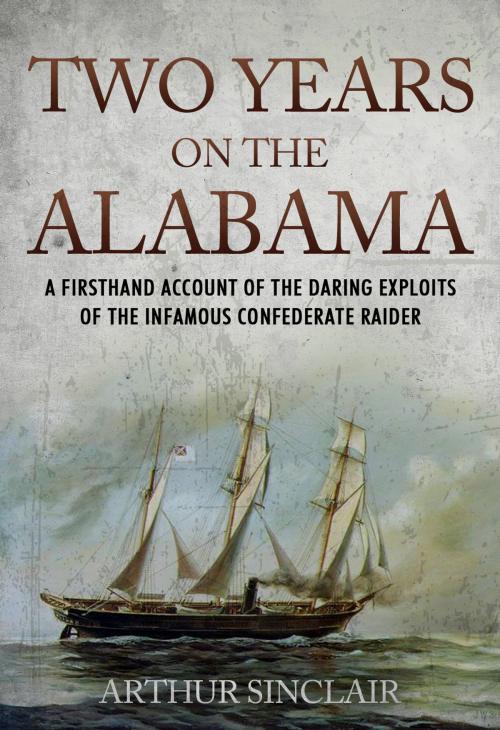Two Years on the Alabama
Nonfiction, History, Military, Naval, Americas, United States, Civil War Period (1850-1877), Biography & Memoir, Historical| Author: | Arthur Sinclair | ISBN: | 1230003263853 |
| Publisher: | Navigation Publishing | Publication: | June 5, 2019 |
| Imprint: | Language: | English |
| Author: | Arthur Sinclair |
| ISBN: | 1230003263853 |
| Publisher: | Navigation Publishing |
| Publication: | June 5, 2019 |
| Imprint: | |
| Language: | English |
From July 1862 until June 1864 the C.S.S. Alabama was the terror of the Atlantic Ocean.
Built in secrecy in Liverpool, England, through the arrangement of Confederate agent Commander James Bulloch, it was built for the fledgling Confederate States Navy which was sorely in need of ships.
Under the command of Raphael Semmes it would spend the next two years terrorising and attacking Union shipping to help the Confederacy break the stranglehold which it found itself in.
Through these two years it completed seven highly successful expeditionary raids, and it had been at sea for 534 days out of 657, never visiting a single Confederate port. They boarded nearly 450 vessels, captured or burned 65 Union merchant ships, and took more than 2,000 prisoners without a single loss of life from either prisoners or their own crew.
Fifth Lieutenant Arthur Sinclair, who served under Semmes on the Alabama for the entirety of its existence, documents a fascinating first-person account of life on board this Confederate raider.
As they crisscrossed over the oceans Sinclair notes the ships they attacked, prisoners they took and various places they visited, from Brazil to South Africa.
Powered by both sail and steam, the Alabama was one of the quickest ships of its era, reaching speeds of over 13 knots. But in the quest for speed there had been sacrifices, notably the lack of heavy armor-cladding and larger guns, which were to prove fatal during the Battle of Cherbourg in 1864 against the U.S.S. Kearsage.
Two Years on the Alabama is an excellent account of naval operations of the confederacy during the American Civil War. It provides brilliant details into the revolutionary changes that were occurring in late-nineteenth century maritime developments.
After the Alabama was sunk Sinclair was rescued by the English yacht Deerhound and taken to Southampton. He later served as an officer of the inactive cruiser CSS Rappahannock at Calais, France. Following the Civil War, he primarily lived in Baltimore, Maryland, where he was a merchant. In 1896 he published Two Years on the Alabama. Arthur Sinclair died in Baltimore in November 1925.
From July 1862 until June 1864 the C.S.S. Alabama was the terror of the Atlantic Ocean.
Built in secrecy in Liverpool, England, through the arrangement of Confederate agent Commander James Bulloch, it was built for the fledgling Confederate States Navy which was sorely in need of ships.
Under the command of Raphael Semmes it would spend the next two years terrorising and attacking Union shipping to help the Confederacy break the stranglehold which it found itself in.
Through these two years it completed seven highly successful expeditionary raids, and it had been at sea for 534 days out of 657, never visiting a single Confederate port. They boarded nearly 450 vessels, captured or burned 65 Union merchant ships, and took more than 2,000 prisoners without a single loss of life from either prisoners or their own crew.
Fifth Lieutenant Arthur Sinclair, who served under Semmes on the Alabama for the entirety of its existence, documents a fascinating first-person account of life on board this Confederate raider.
As they crisscrossed over the oceans Sinclair notes the ships they attacked, prisoners they took and various places they visited, from Brazil to South Africa.
Powered by both sail and steam, the Alabama was one of the quickest ships of its era, reaching speeds of over 13 knots. But in the quest for speed there had been sacrifices, notably the lack of heavy armor-cladding and larger guns, which were to prove fatal during the Battle of Cherbourg in 1864 against the U.S.S. Kearsage.
Two Years on the Alabama is an excellent account of naval operations of the confederacy during the American Civil War. It provides brilliant details into the revolutionary changes that were occurring in late-nineteenth century maritime developments.
After the Alabama was sunk Sinclair was rescued by the English yacht Deerhound and taken to Southampton. He later served as an officer of the inactive cruiser CSS Rappahannock at Calais, France. Following the Civil War, he primarily lived in Baltimore, Maryland, where he was a merchant. In 1896 he published Two Years on the Alabama. Arthur Sinclair died in Baltimore in November 1925.















